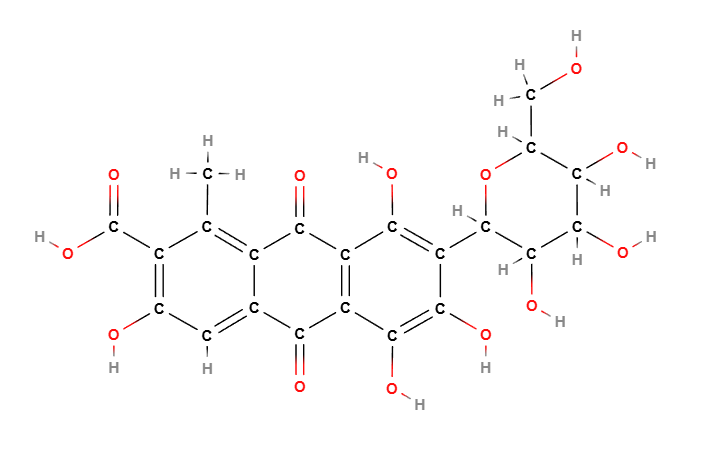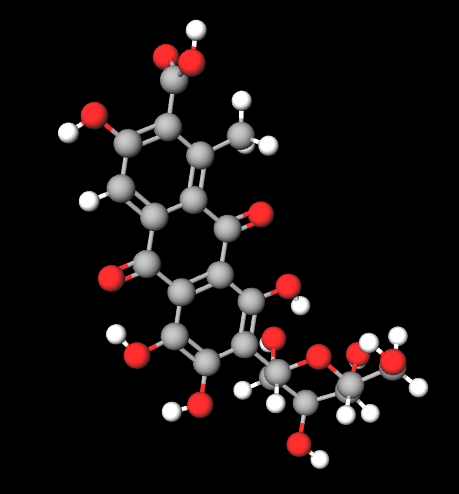Check the ingredients!
... live healthy!


| "Descrizione" by Al222 (19776 pt) | 2024-May-29 10:30 |
Natural Red 4 (CI 75470) is a chemical compound, a synthetic red dye and is known as , Cochineal Carmine, E120.
It may be produced naturally by the female cochineal (Dactylopius coccus) (1) from its body or from eggs, or by chemical synthesis and is the most commonly observed case in food.
Chemical Name
3,5,6,8-tetrahydroxy-1-methyl-9,10-dioxo-7-[(2S,3R,4R,5S,6R)-3,4,5-trihydroxy-6-(hydroxymethyl)oxan-2-yl]anthracene-2-carboxylic acid
Industrial Production Process
What it is used for and where
Cosmetics
estricted cosmetic ingredient as IV/115 a Relevant Item in the Annexes of the European Cosmetics Regulation 1223/2009. Substance or ingredient reported:
Cosmetics - INCI Functions
Colorant. This ingredient has the function of colouring the solution in which it is inserted in a temporary, semi-permanent or permanent manner, either alone or in the presence of the complementary components added for colouring.
Fragrance. It plays a very important role in the formulation of cosmetic products as it provides the possibility of enhancing, masking or adding fragrance to the final product, increasing its marketability. It is able to create a perceptible pleasant odour, masking a bad smell. The consumer always expects to find a pleasant or distinctive scent in a cosmetic product.
Safety
There are contraindications for health related to the use of this additive.
In particular allergies were found (2) and the Council of Europe recommended a containment of the protein level in E120 (3) with purification systems (4).
 |  |
Formula molecolare: C22H20O13
Peso molecolare: 492.389 g/mol
CAS: 1343-78-8
EC Number: 215-724-4
FEMA Number: 2242
UNII CID8Z8N95N
DTXSID20859613
Synonyms:
E120
Cochineal Carmine
Natural Red 4
CI 75470
Bibliografia______________________________________________________________________
(1) Perez Guerra, G. and M. Kosztarab, Biosystematics of the family Dactylopiidae (Homoptera: coccinea) with emphasis on the life cycle od Dactylopius coccus Costa, in Studies if Morphology and Systematics of Scale Insects. 1992: Blacksburg, Virginia..
Abstract. The cochineal insects include nine species assigned to the genus Dactylopius, the only genus in the family Dactylopiidae. This is a review of all the species in the family Dactylopiidae, with special emphasis on the life cycle of the type species Dactylopius coccus Costa. The adult females of the nine species have been redescribed and illustrated, with a discussion on their morphological affinities and relationships. Their hosts, natural enemies, distribution, etymology, and role as biological control agents are discussed. For several species many new distribution and host records are given. Also, new types have been designated for the following species: one neotype and three paratypes for Dactylopius coccus Costa; one neotype for D. tomentosus (Lamarck); and designation of eight new topotypes for D. opuntiae (Cockerell). Methods are given on collecting, preservation, slide mounting, measuring, and preparing illustrations. Cuticular ultrastructure is shown in scanning electron micrographs. All developmental stages of the type species, D. coccus, are described. The life cycles under two temperatures and two relative humidities, for both males and females, are discussed. Aspects of reproduction in D. coccus, its dispersal methods, factors affecting development, and its economic importance are also included. A separate chapter deals with the host-plants of Dactylopiidae. This chapter includes data on host plant suitability and host plant resistance. Three identification keys are presented: one to the suborders of Homoptera, the other to the superfamilies and families of Coccinea, and another one for the determination of the species of Dactylopius. The phylogenetic relationships of the family Dactylopiidae with respect to all the Coccinea families are discussed, and a phylogenetic tree for the Dactylopius species is proposed.
(2) Shaw DW. - Allergic contact dermatitis from carmine. Dermatitis. 2009 Sep-Oct;20(5):292-5.
Chung, K., et al., Identification of carmine allergens among three carmine allergy patients. Allergy, 2001. 56(1): p. 73-7.
Acero, S., et al., Occupational asthma and food allergy due to carmine. Allergy, 1998. 53(9): p. 897-901.
Beaudouin, E., et al., Food anaphylaxis following ingestion of carmine. Ann Allergy Asthma Immunol, 1995. 74(5): p. 427-30.
(3) en_1995L0045_do_001.pdf, h.e.e.i.e.-l.e.c.p., CONSLEG 1995L0045-10/05/2004. 2004, Official Publications of the European Communities
(4) Scopes, R.K., Protein purification : principles and practice. 3rd ed. Springer advanced texts in chemistry. 1994, New York: Springer-Verlag. xix, 380.
| Evaluate |